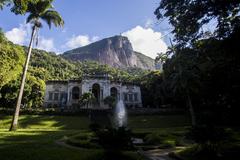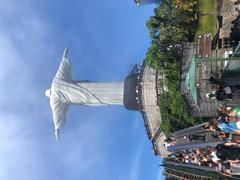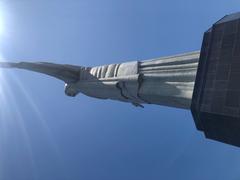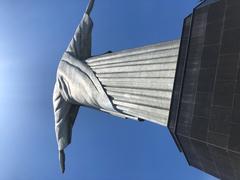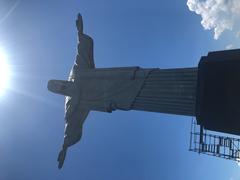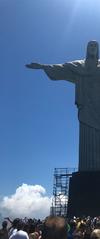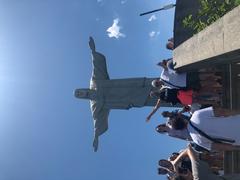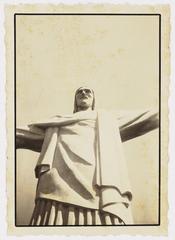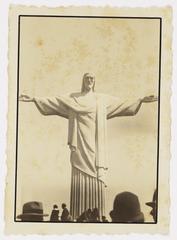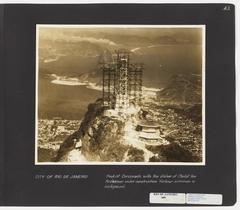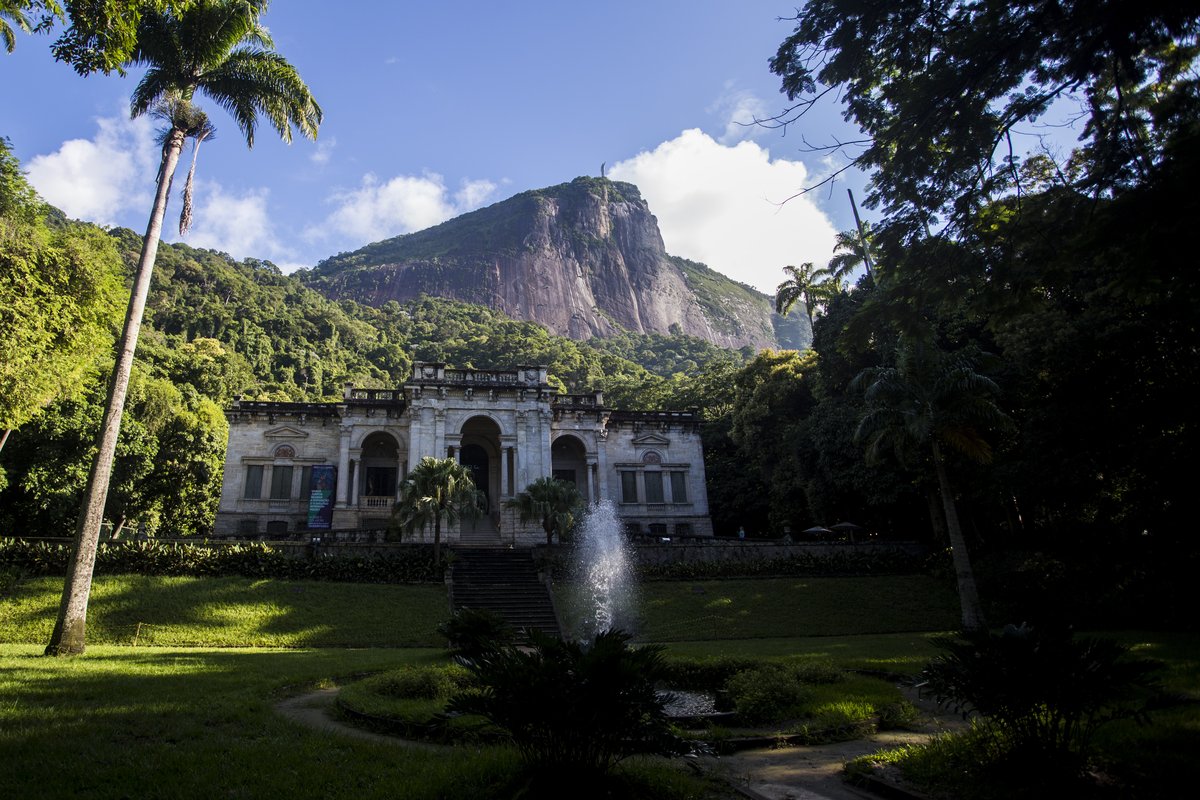
Christ the Redeemer: Visiting Hours, Tickets, and Rio de Janeiro Historical Sites Guide
Date: 14/06/2025
Introduction
Christ the Redeemer (Cristo Redentor) rises majestically above Rio de Janeiro atop Corcovado Mountain, serving as both a spiritual beacon and a cultural icon. This monumental Art Deco statue, with its 30-meter height and 28-meter arm span, embodies ideals of peace, unity, and hospitality that resonate across Brazil and the world. Since its inauguration in 1931, Christ the Redeemer has become not only an architectural marvel but also a symbol of Brazilian identity, drawing millions of visitors annually to witness its grandeur and the breathtaking panoramas of Rio de Janeiro (Wikipedia; History Hit; Travel Pander).
This comprehensive guide details the monument’s history, cultural significance, visiting hours, ticketing, accessibility, and tips for making the most of your visit. Whether you seek spiritual reflection, historical insight, or simply stunning views, Christ the Redeemer promises an unforgettable experience.
Table of Contents
- Historical Background
- Visiting Christ the Redeemer
- Frequently Asked Questions (FAQ)
- Summary
- References and Further Reading
Historical Background
Origins and Conceptualization
The idea for a monumental Christian statue atop Corcovado Mountain dates back to the 1850s, when Vincentian priest Pedro Maria Boss proposed a tribute to Princess Isabel. However, the secularization of Brazil’s government in 1889 halted early plans (Wikipedia).
In 1920, the Catholic Circle of Rio de Janeiro revived the project, aiming to reaffirm faith and counter perceived societal secularism. Funded through community support, the initiative gained momentum and public endorsement (History Hit).
Design and Construction
After considering several concepts, the chosen design depicted Christ with open arms, symbolizing welcome and peace. Brazilian engineer Heitor da Silva Costa led the project, with French-Polish sculptor Paul Landowski crafting the statue and Romanian artist Gheorghe Leonida sculpting the face. Structural engineering was overseen by French engineer Albert Caquot (Wikipedia; Maya The Voice).
Construction spanned from 1922 to 1931, overcoming significant logistical challenges due to the mountain’s elevation and rugged terrain. The statue comprises reinforced concrete and is clad in thousands of soapstone tiles, selected for their durability in Rio’s climate. Upon completion, it stood as the largest Art Deco statue globally, weighing approximately 635 metric tonnes (Mundo Wanderlust).
Inauguration and Cultural Impact
Christ the Redeemer was inaugurated on October 12, 1931, instantly becoming an emblem of hope and protection for Rio. Its Art Deco style and grand scale made it a defining feature of the city’s skyline and a symbol of national pride. Over the decades, it has played a central role in religious, cultural, and civic events, including the 2016 Summer Olympics (Maya The Voice).
In 2007, the statue was voted one of the New Seven Wonders of the World, further cementing its status as a global icon (Wikipedia).
Restoration and Preservation
Exposure to the elements has necessitated several restoration projects:
- 1990: Major repairs and cleaning by a coalition of public and private organizations.
- 2003: Installation of elevators and escalators for improved access.
- 2010: Comprehensive restoration, including crack repairs and lightning protection upgrades. Over 60,000 original soapstone pieces were used.
- Lightning Damage: The statue has endured multiple lightning strikes, with prompt restoration after damage to fingers, head, and eyebrows (Wikipedia).
Ongoing maintenance ensures the monument’s preservation and safety for future generations (Travel Pander).
Visiting Christ the Redeemer
Visiting Hours and Tickets
- Hours: Open daily from 8:00 AM to 7:00 PM (last entry at 6:00 PM). Arrive early to enjoy the views and avoid heavy crowds (Rachel Lucas Hotels).
- Tickets: Purchase tickets online in advance or at the base. Prices for adults typically range from BRL 65–85, with discounts for children and seniors. Ticket packages often include transportation via train or van (The Tourist Checklist).
How to Get There
1. Corcovado Rack Railway:
A scenic 20-minute train ride through Tijuca National Park, departing from Cosme Velho station. Advance booking is essential, especially in high season (Trem do Corcovado).
2. Official Vans:
Depart from Copacabana, Largo do Machado, Barra da Tijuca, and the Paineiras Visitor Center. Advance tickets are required (Paineiras Corcovado).
3. Hiking Trails:
Adventurous visitors can hike through Tijuca National Park. The trek takes 1.5 to 2 hours, with encounters with local wildlife and scenic viewpoints (Rio Cultural Secrets).
Accessibility
Recent renovations have made Christ the Redeemer accessible to all. Elevators and escalators eliminate the need to climb 222 steps, and ramps accommodate wheelchairs. Some steep paths may require assistance (Rachel Lucas Hotels).
On-Site Experience
- Viewing Platform: Offers 360° panoramas of Rio, including Sugarloaf Mountain, Copacabana Beach, and Guanabara Bay.
- Facilities: Restrooms, a café, souvenir shop, and the Nossa Senhora Aparecida Chapel (added in 2006) are available for visitors’ convenience (Rio Cultural Secrets).
- Recommended Duration: Allow at least two hours for your visit, or longer if combining with other nearby attractions (Rachel Lucas Hotels).
Guided Tours and Unique Activities
- Guided Tours: Enhance your visit with guided tours that provide in-depth historical and cultural insights. Both group and private options are available, often including transportation and skip-the-line access (Rio Cultural Secrets).
- Combined Tours: Many operators offer packages that include Christ the Redeemer and other Rio highlights, such as Sugarloaf Mountain or Santa Teresa (Mauka Travels).
- Helicopter Tours: For a unique perspective, consider a helicopter tour for aerial views of the statue and city (Rachel Lucas Hotels).
Nearby Attractions
- Tijuca National Park: An expansive urban rainforest with hiking trails and scenic viewpoints such as Vista Chinesa and Mirante Dona Marta.
- Sugarloaf Mountain, Copacabana Beach, Guanabara Bay: Easily accessible for a full day of exploration (The Tourist Checklist).
Best Times and Practical Tips
- Best Time to Visit: Early morning (7:30–8:00 am) for fewer crowds and optimal lighting. The dry season (May–September) offers the clearest skies (The Tourist Checklist).
- Weather: Rio’s weather is unpredictable. Check the forecast before your visit to avoid fog-obscured views.
- Essentials: Bring a camera, water, cash, comfortable shoes, sunscreen, and sunglasses. There is minimal shade at the summit (Destinationless Travel).
- Security: Keep belongings secure. Prohibited items include drones, large bags, and suitcases (Rachel Lucas Hotels).
Frequently Asked Questions (FAQ)
Q: What are the opening hours?
A: Daily from 8:00 AM to 7:00 PM (last entry at 6:00 PM).
Q: How do I buy tickets?
A: Online in advance or at the base; advance purchase is highly recommended.
Q: What is the ticket price?
A: Adult tickets range from BRL 65–85; discounts for children and seniors.
Q: How do I get to the statue?
A: By train (Corcovado Rack Railway), official van, or hiking through Tijuca National Park.
Q: Is the site accessible?
A: Yes, with elevators, escalators, and ramps for mobility-impaired visitors.
Q: Are guided tours available?
A: Yes, both group and private tours are offered, often including transport.
Q: What else can I do nearby?
A: Visit Sugarloaf Mountain, Tijuca National Park, Copacabana Beach, and other Rio sites.
Summary
Christ the Redeemer remains a powerful symbol of faith, artistry, and Brazilian culture, offering visitors an experience that transcends sightseeing. Its Art Deco elegance, innovative engineering, and panoramic setting provide a profound sense of wonder. With careful planning—advance ticketing, early arrival, and consideration of accessibility—your visit can be as seamless as it is inspiring.
By exploring Christ the Redeemer alongside Rio’s other historical sites and natural wonders, travelers can fully appreciate the rich tapestry of Brazil’s heritage. For up-to-date information, downloadable guides, and exclusive offers, be sure to download the Audiala app and follow our channels for the latest travel inspiration.
References and Further Reading
- Christ the Redeemer (statue), 2023, Wikipedia (Wikipedia)
- Christ the Redeemer Visiting Hours, Tickets, and History: A Guide to Rio de Janeiro’s Iconic Monument, History Hit (History Hit)
- Christ the Redeemer in Rio de Janeiro: Facts and Significance, Travel Pander (Travel Pander)
- Visit Christ the Redeemer Rio de Janeiro Guide, Rachel Lucas Hotels (Rachel Lucas Hotels)
- Christ the Redeemer: History, Significance, and Symbol, Mundo Wanderlust (Mundo Wanderlust)
- Ultimate Guide to Visiting Christ the Redeemer, The Tourist Checklist (The Tourist Checklist)
- Christ the Redeemer Architecture and Facts, Wonders of the World (Wonders of the World)
- Christ the Redeemer Statue History Facts and Aesthetics, Abirpothi (Abirpothi)
- Christ the Redeemer Tours and Visitor Information, Rio Cultural Secrets (Rio Cultural Secrets)
- Christ the Redeemer Statue Facts and Cultural Significance, DoinBrazil (DoinBrazil)
- Official Christ the Redeemer Website (Official Christ the Redeemer Website)
- Corcovado Rack Railway Tickets (Trem do Corcovado)
- Paineiras Corcovado Official Vans (Paineiras Corcovado)
Internal links:
Visuals and interactive content, including optimized images and virtual tours, are recommended for an enhanced experience.
